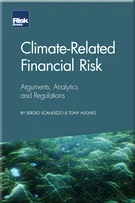Refinancing Risk and Optimal Debt Maturity
Foreword
Introduction
Theory and Practice of Corporate Risk Management
Theory and Practice of Optimal Capital Structure
Introduction to Funding and Capital Structure
How to Obtain a Credit Rating
Refinancing Risk and Optimal Debt Maturity
Optimal Cash Position
Optimal Leverage
Introduction to Interest Rate and Inflation Risks
How to Develop an Interest Rate Risk Management Policy
How to Improve Your Fixed-Floating Mix and Duration
Interest Rates: The Most Efficient Hedging Product
Do You Need Inflation-linked Debt?
Prehedging Interest Rate Risk
Pension Fund Asset and Liability Management
Introduction to Currency Risk
How to Develop Currency Risk Management Policy
Translation or Transaction: Netting Currency Risks
Early Warning Signals
How to Hedge High Carry Currencies
Currency Risk on Covenants
Optimal Currency Composition of Debt 1: Protect Book Value
Optimal Currency Composition of Debt 2: Protect Leverage
Cyclicality of Currencies and Use of Options to Manage Credit Utilisation
Managing the Depegging Risk
Currency Risk in Luxury Goods
Introduction to Credit Risk
Counterparty Risk Methodology
Counterparty Risk Protection
Optimal Deposit Composition
Prehedging Credit Risk
xVA Optimisation
Introduction to M&A-related Risks
Risk Management for M&A
Deal-contingent Hedging
Introduction to Commodity Risk
Managing Commodity-linked Revenues and Currency Risk
Managing Commodity-linked Costs and Currency Risk
Commodity Input and Resulting Currency Risk
Offsetting Carbon Emissions
Introduction to Equity Risk
Hedging Dilution Risk
Hedging Deferred Compensation
Stake-building
There are two ways to define the refinancing risk. The narrow definition is based on the small likelihood that the company cannot refinance its maturing debt at any price because the investors feel that the risk is too high. In normal times, this risk exists only for smaller and less mature companies, but at moments of credit crisis, such as in 2008, this risk becomes significant for many more companies. A more general definition of refinancing risk, which applies to all companies at all times, is the risk that the cost of debt will increase compared to a baseline scenario. This is the definition of refinancing risk that we consider in this chapter.
MATCHING THE MATURITY OF ASSETS AND LIABILITIES
In a 2002 study based on a survey of 392 CFOs from the Fortune 500 company list (Graham and Harvey, 2002), one of the questions was: “How do you decide on the debt maturity?” Figure 5.1 shows the poll results.
One thing is clear: although companies use a variety of considerations to decide on their debt maturity, a significant majority is focused on matching the maturity of assets and liabilities.
Why is this important? Figure 5.2 shows three possible situations. The main message
Copyright Infopro Digital Limited. All rights reserved.
As outlined in our terms and conditions, https://www.infopro-digital.com/terms-and-conditions/subscriptions/ (point 2.4), printing is limited to a single copy.
If you would like to purchase additional rights please email info@risk.net
Copyright Infopro Digital Limited. All rights reserved.
You may share this content using our article tools. As outlined in our terms and conditions, https://www.infopro-digital.com/terms-and-conditions/subscriptions/ (clause 2.4), an Authorised User may only make one copy of the materials for their own personal use. You must also comply with the restrictions in clause 2.5.
If you would like to purchase additional rights please email info@risk.net









